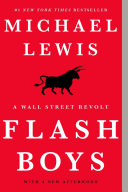

High-frequency trading (HFT) is a form of algorithmic trading characterized by high speeds, high turnover rates, and high order-to-trade ratios. HFT firms use complex algorithms to analyze multiple markets and execute orders based on market conditions. This trading strategy has transformed the financial landscape, allowing traders to capitalize on minute price discrepancies across different exchanges. However, HFT has also raised ethical questions regarding market fairness, as these traders often have technological advantages over traditional investors. The book discusses how HFT firms, like IEX, emerged to counteract these advantages and promote a more equitable trading environment.
Continue readingMarket fragmentation refers to the division of trading across multiple exchanges and platforms, which has increased since the introduction of electronic trading. This fragmentation can lead to inefficiencies and complexities in price discovery, as different exchanges may display different prices for the same security at any given time. The book illustrates how this fragmentation has created opportunities for HFT firms to exploit price differences, thus impacting the overall market dynamics. The emergence of IEX as a new exchange aimed to address these issues by providing a fairer trading platform.
Continue readingTechnology plays a crucial role in modern trading practices, particularly in HFT. The book delves into how advancements in technology have allowed traders to execute orders in fractions of a second, often before human traders even have a chance to react. This technological arms race has led to an environment where speed is paramount, often at the expense of transparency and fairness. The narrative follows various characters who navigate this high-tech landscape, highlighting the implications of relying heavily on technology in trading.
Continue readingThe book raises important ethical questions regarding market manipulation and the integrity of financial markets. It discusses tactics used by HFT firms that can be seen as manipulative, such as 'quote stuffing' and 'layering,' which can distort market prices and mislead investors. These practices have sparked debates about the need for regulatory oversight to ensure fair trading practices. The book emphasizes the moral responsibility of traders and the need for a system that prioritizes fairness over mere profit.
Continue readingThe Investors Exchange (IEX) was founded as a response to the challenges posed by HFT and market fragmentation. The book chronicles the journey of its founders, including Brad Katsuyama, as they sought to create a more equitable trading environment. IEX introduced innovative features, such as a 'speed bump' that delays orders by a fraction of a second, leveling the playing field for all traders. This narrative illustrates the power of innovation and the potential for change within the financial industry.
Continue readingRetail investors have often been at a disadvantage in the high-speed trading environment dominated by HFT firms. The book discusses how retail investors can be negatively affected by practices like front-running, where HFT firms execute orders based on knowledge of impending trades. This situation raises concerns about the accessibility and fairness of the stock market for everyday investors. The narrative advocates for greater awareness among retail investors about the complexities of modern trading.
Continue readingThe book highlights the ongoing challenges faced by regulators in keeping pace with the rapid evolution of trading technologies and practices. It discusses the need for reforms to ensure that markets remain fair and transparent. The narrative suggests that while regulations can help mitigate some of the negative impacts of HFT and market fragmentation, they must be carefully crafted to avoid stifling innovation. The book calls for a collaborative approach between regulators, exchanges, and traders to create a more equitable financial system.
Continue reading